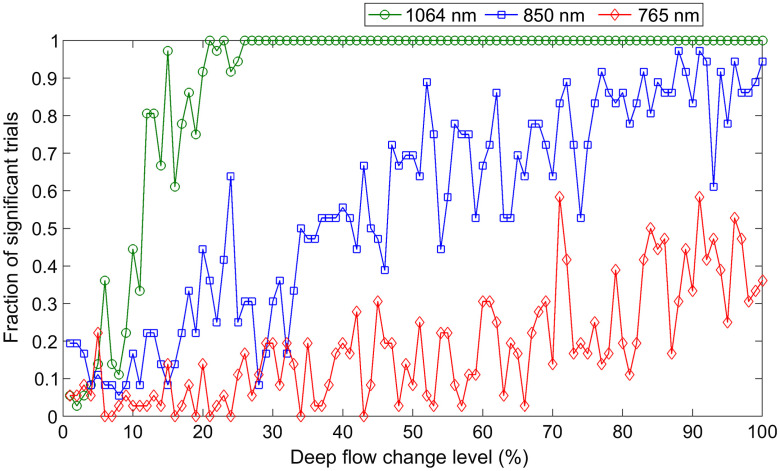Fig. 4.
Probability of detecting a statistically significant change in deep-tissue blood flow from a pair of 10 s measurements as a function of the actual amount of change for noise-realistic simulated measurements at 765 nm (red diamonds), 850 nm (blue squares), and 1064 nm (green circles). We assumed HbT, with a 66% , water fraction of 0.6 (no fat), and for the superficial layer (1-cm thick), and HbT with a 62.5% , water fraction of 0.75 (also with no fat), and for the deep layer. The source–detector separation was set to 3 cm, and we assumed 7 kcps at 765 nm on four co-located fibers, scaling up to 10.9 and 42.5 kcps at 850 and 1064 nm, respectively, reflecting conservative estimates of the benefits of longer wavelengths.

